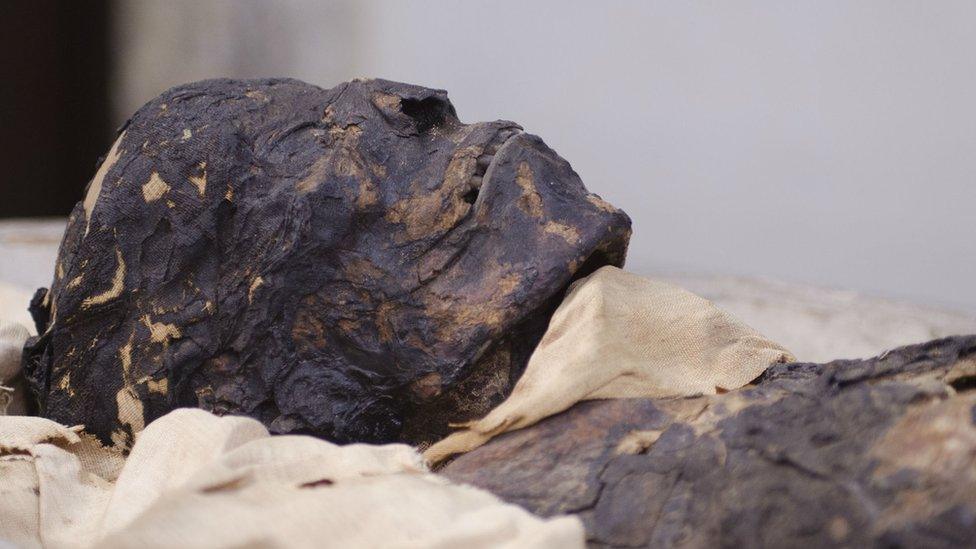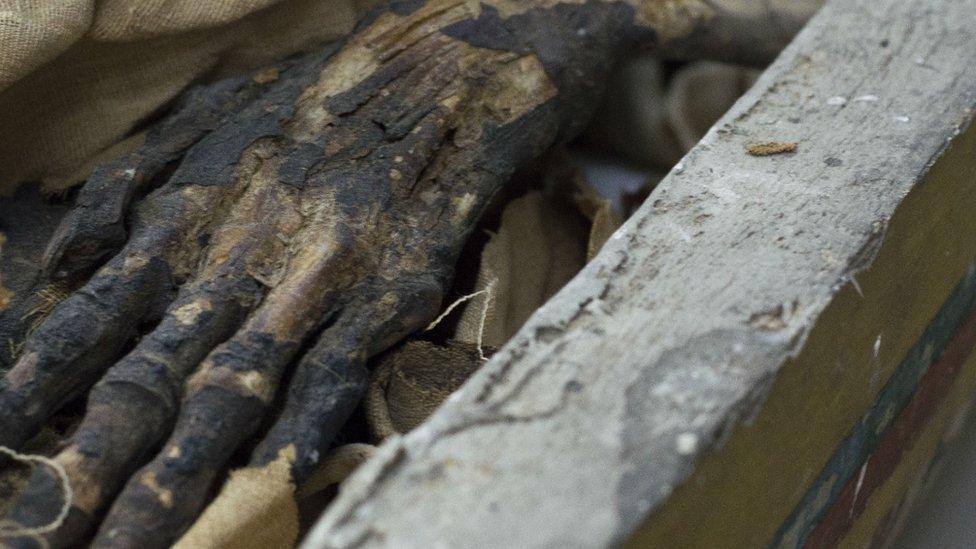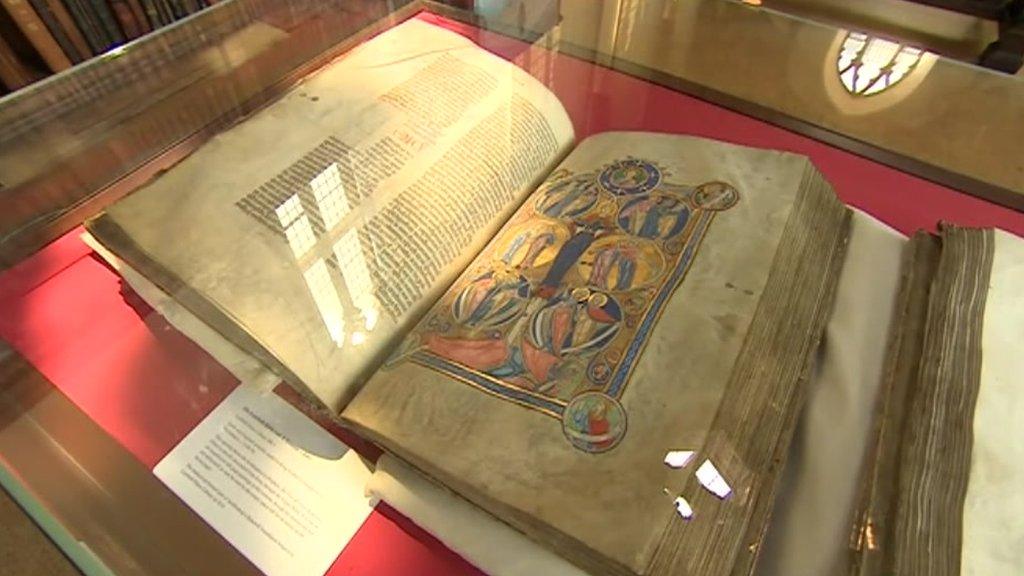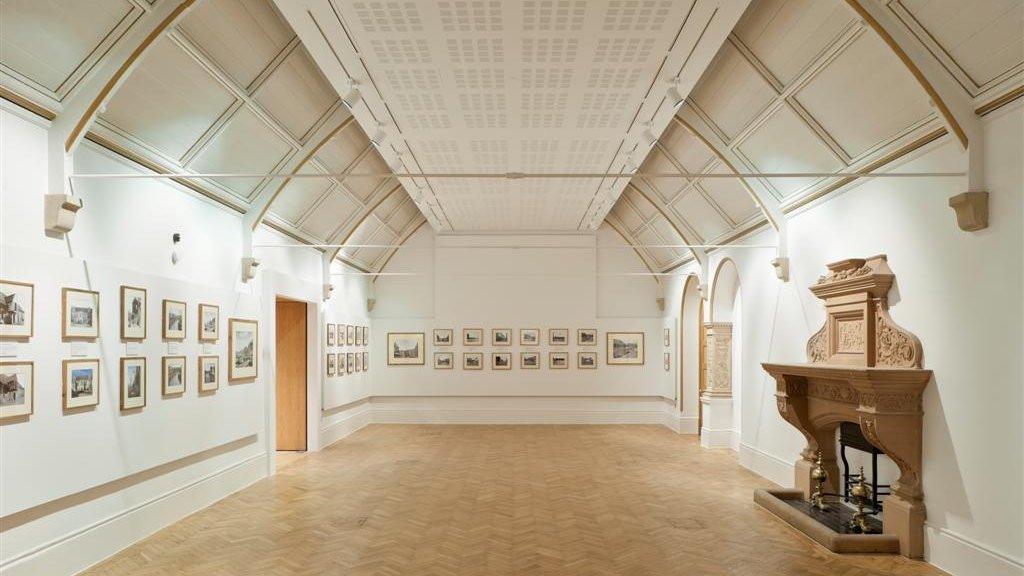Maidstone mummy: Scan to reveal story of ancient artefact
- Published

A conventional CT scan should help uncover new information about the Maidstone mummy
The story behind an almost 3,000-year-old Egyptian whose mummified body is on display at a Kent museum is about to be unearthed, thanks to lottery money.
The mummy is already a favourite at Maidstone Museum, but scientists plan to use a grant to reconstruct her face and discover more about her background.
Ta-Kush is believed to be a 14-year-old girl who died about 2,700 years ago.
But museum staff say the results of a CT scan on the mummy and coffin could even rewrite history.
They plan to use the £78,700 grant to bring together the museum's Egyptian and Greek collections in a new ancient civilisations gallery.
Digital reconstruction
But the centrepiece will be Ta-Kush, who until recently was thought to be called Ta-Kesh.

The body has been well preserved by the mummification techniques
Samantha Harris, the museum's collections manager, said studies by an Egyptologist in Cairo had revealed the girl's true name.
"For over 150 years we've been calling her Ta-Kesh. But she's reinterpreted her name as Ta-Kush, which means the Kushite lady," she said.
The mummy, which has been at the museum since the 1850s, will be scanned by experts at Kent Institute of Medicine and Surgery (Kims) and the results analysed by their counterparts at Liverpool John Moore's University, who will digitally reconstruct the face, head and shoulders.
Girl or boy?
Lyn Palmer, who is managing the project, said: "It is going to personalise Ta-Kush. It will mean that our visitors will be able to see what she looks like."

Hieroglyphics on the coffin have helped provide information about the mummy
The scientific analysis should also help establish for sure the body's age and even confirm its sex.
Ms Palmer added: "We think she's a 14-year-old girl, but she may turn out not to be. Previous scans of females have turned out to be male."
Work already being undertaken has helped narrow down where she originated to the area around Thebes, details about her parents and her name, gleaned from hieroglyphics on the coffin.
Matt Travail, imaging manager at Kims, said: "It will be completely different from how we scan our patients. The scan itself will be over and done with in five minutes, but a lot of the time... will be spent on the analysis of it and the reconstruction."
- Published8 June 2013

- Published6 September 2012
